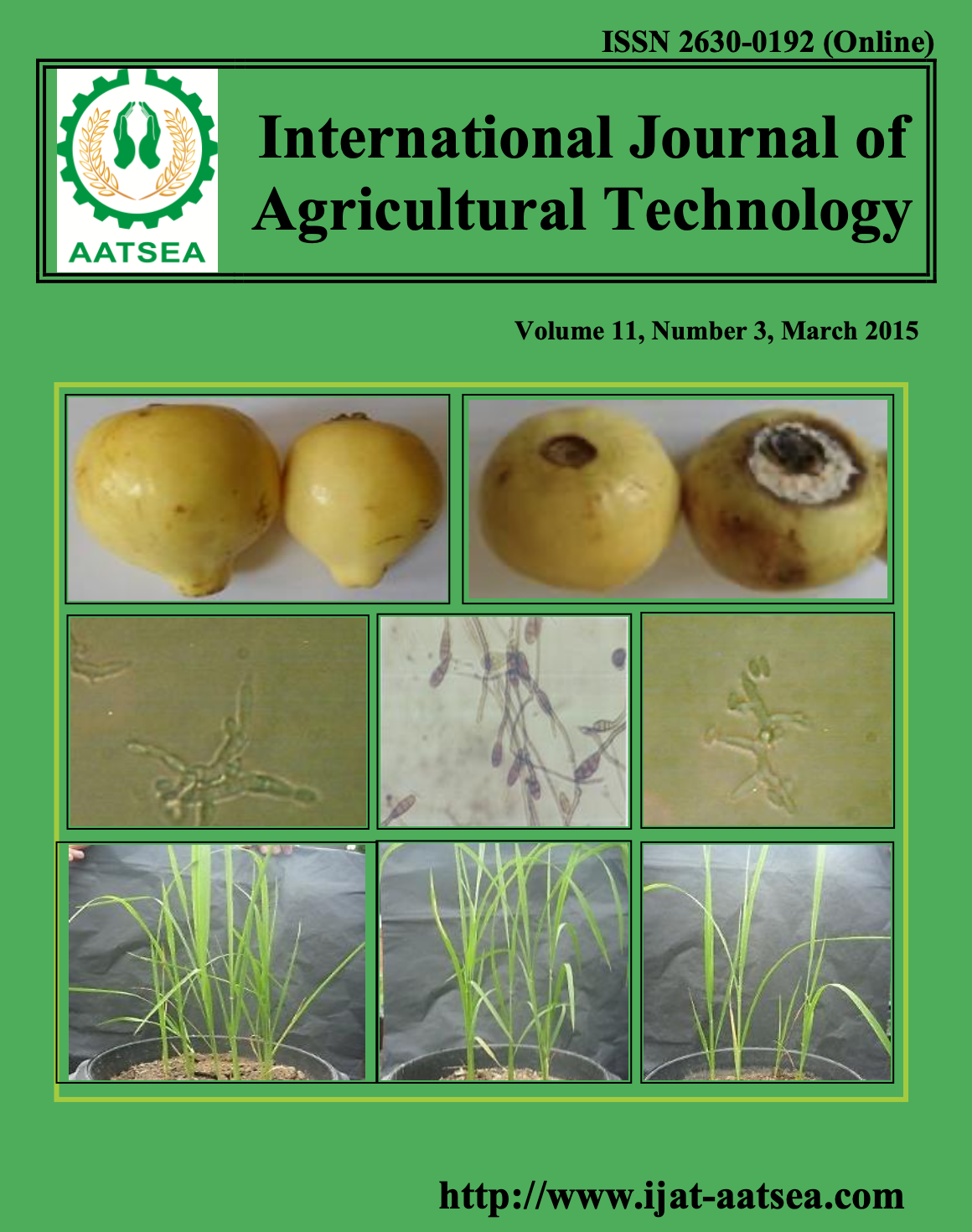Mitochondrial DNA analysis revealed Gondwanan origin of the common evening brown butterfly, Melanitis leda (Lepidoptera: Nymphalidae)
Main Article Content
Abstract
Article Details

This work is licensed under a Creative Commons Attribution-NonCommercial-NoDerivatives 4.0 International License.
References
Barron, E. J. and Harrison, C. G. A. (1980). An analysis of past plate motions; the South Atlantic and Indian oceans. Mechanisms of continental drift and plate tectonics. London: Academic Press. pp. 89-109.
Biju, S. D. and Bossuyt, F. (2003). New frog family from India reveals an ancient biogeographical link with the Seychelles. Nature 435:711-714.
Brown, B., Muller, R. D., Struckmeyer, H. I. M., Gaina, C., Stagg, H. and Symonds, P. (2003). Formation and evolution of Australian passive margins: implications for locating the boundary between continental and oceanic crust. Evolution and Dynamics of the Australian Plate. pp. 223-243.
Conti, E., Eriksson, T., Schonenberger, K. J., Sytsma, K. J. and Baum, D. A. (2002). Early Tertiary out-of- India dispersal of Crypteroniaceae: evidence from phylogeny and molecular dating. Evolution 56:1931-1942.
Cooper, A., Lalueza-Fox, C., Anderson, S., Rambaut, A., Austin, J. and Ward, R. (2001). Complete mitochondrial genome sequences of two extinct moas clarify ratite evolution. Nature 409:704-706.
Cracraft, J. (2001). Avian evolution, Gondwanan biogeography and the Cretaceous-Tertiary mass extinction event. Proceedings of The Royal Society of London Series. Biological Science 268:459-469.
Dale, D. (1994). Insect pests of the rice plant - their biology and ecology. Biology and management of rice insects. New Delhi: Wiley Eastern. pp. 363-485.
Gaikwad, S. S., Ghate, H. V., Ghaskadbi, S. S., Patole, M. S. and Shouche, Y. S. (2012). DNA barcoding of nymphalid butterflies (Nymphaledae: Lepidoptera) from Western Ghats of India. Molecular Biology Reports 39:2375-2383.
Hebert, P. D. N., de Waard, J. and Landry, J. F. (2009). DNA barcodes for 1/1000 of the animal kingdom. Biology Letters 6:359-362.
Heinrichs, E. A. and Barrion, A. T. (2004). Rice-feeding insects and selected natural enemies in West Africa: biology, ecology, identification. Los Banos (Philippines): International Rice Research Institute and Abidjan (Côte d’Ivoire): WARDA–The Africa Rice Center.
Krause, D. W. and Maas, M. C. (1990). Thebiogeographical origins of the late Paleocene-early Eocene mammalian immigrants to the western interior of North America. Dawn of the age of mammals in the northern part of the Rocky Mountain interior, North America. New York: Geological Society of America. pp. 71-105.
Lee, T. Y. and Lawver, L. A. (1995). Cenozoic plate reconstruction of the southeast Asia region. Tectonophysics 251:85-138.
Muller, R. D., Gaina, C. and Clarke, S. (2000). Seafloor spreading around Australia Billion-year Earth History of Australia and Neighbours in Gondwanaland. Sydney: Gemoc Press. pp. 18-28.
Murray, D. and Prowell, D. P. (2005). Molecular phylogenetics and evolutionary history of the neotropical Satyrine Subtribe Euptychiina (Nymphaledae: Satyrinae), Molecular Phylogenetics and Evolution 34:67-80.
Noonan, B. P. and Chippindale, P. T. (2006). Dispersal and vicariance: the complex evolutionary history of boid snakes. Molecular Phylogenetics and Evolution 40:347-358.
Powell, C. M., Roots, S. R. and Veevers, J. J. (1988). Pre-breakup continental extension in eastern Gondwanaland and the early opening of the eastern Indian Ocean.Tectonophysics 155:261-283.
Sanmartin, I. and Ronquist, F. (2004). Southern Hemisphere biogeography inferred by event-based models: Plant versus animal patterns. Systematic Biology 53:216-243.
Storey, M., Mahoney, J. J., Saunders, A. D., Duncan, R. A., Kelley, S. O. and Coffin, M. F. (1995). Timing of hot-spot related volcanism and the breakup of Madagascar and India. Science 267:852-855.
Torsvik, T. H., Tucker, R. D., Ashwal, L. D., Carter, L. M., Jamtveit, B., Vidyadharan, K. T. and Venkataramana, P. (2000). Late Cretaceous India–Madagascar fit and timing of break-up related magmatism. Terra Nova 12:220-224.
Wahlberg, N., Weingartner, E. and Nylin, S. (2003). Towards a better understanding of the higher systematics of Nymphaledae (Lepidoptera: Papilionoidea), Molecular Phylogenetics and Evolution 28:473-484.
Zardoya, R., Vollmer, D. M., Craddock, C., Streelmans, J. T., Karl, S. A. and Meyer, A. (1996). Evolutionary conservation of microsatellite flanking regions and their use in resolving the phylogeny of cichlid fishes (Pisces: Perciformes). Proceedings of the Royal Society of London Series B. Biological Science 263:1589-1598.


